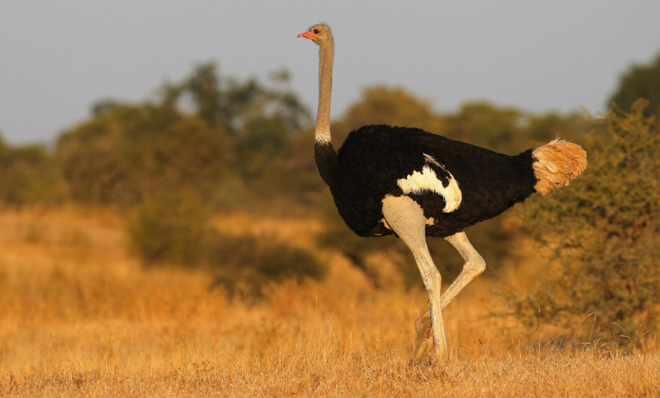How did flightless birds travel around the world?
It's a question that has bedeviled ornithologists for years. And it might have just been solved.

Despite being flightless, the ostriches of Africa have distant relations in Australia, New Zealand, and South America. All part of a group called the ratites, these birds share some common interests, like laying eggs, running fast, and not flying. But a logical question has bedeviled ornithologists for years: If these birds can't fly, how did they spread across the globe?
The standard explanation is that their common ancestor, also flightless, once roamed all over a southern supercontinent called Gondwana. As the continent split up millions and millions of years ago, populations of this bird were separated from each other on newly-formed landmasses. As their homes drifted into new positions, the isolated birds adapted and evolved in different ways, giving rise to the diversity of earth-bound birds we know today.
It makes sense, but new discoveries about the branching of the ratites' family tree doesn't quite fit the story and suggests instead that their ancestors could take to the sky. The key to figuring out their evolutionary relationship hasn't been what's alive, but what's dead.
The Week
Escape your echo chamber. Get the facts behind the news, plus analysis from multiple perspectives.

Sign up for The Week's Free Newsletters
From our morning news briefing to a weekly Good News Newsletter, get the best of The Week delivered directly to your inbox.
From our morning news briefing to a weekly Good News Newsletter, get the best of The Week delivered directly to your inbox.
The kiwi and the now-extinct moa, for example, are both from New Zealand, so they should theoretically be each other's closest relatives. But recent studies have shown that kiwis are more closely related to Australian emus. The closest living relatives of the moa, meanwhile, are the tinamous (which can fly, but do so reluctantly and poorly) from way over in South America.
Africa and Madagascar, meanwhile, were the first landmasses to drift away from the supercontinent. We've already been introduced to the ostriches of Africa. In Madagascar, the aptly named elephant bird — which at 10-feet tall was the tallest bird of its time — patrolled the island until it went extinct in the 16th or 17th centuries. If the standard explanation is true, ostriches and elephant birds should be the oldest line of ratites and closely related. But, while the ostrich is indeed an old ratite, it turns out the elephant bird's relationship to its distant cousins has been very difficult to pinpoint. A study published today by researchers from Australia and New Zealand has finally figured out the extinct bird's place in the family tree — and the finding further complicates the "out of Gondwana" hypothesis.
After analyzing mitochondrial DNA from two elephant bird species, the researchers found that the extinct birds are most closely related to the geographically far-flung kiwi, and evolutionarily distant from the physically closer ostrich. What's more, dating of the DNA suggests that kiwis and elephant birds didn't diverge from each other or the other ratites until after Gondwana split apart — meaning whatever ancestral population they came from had to arrive to both Madagascar and New Zealand post-breakup. And that would make walking there, very, very challenging.
So, instead of descending from flightless ancestors being driven apart by geology, it now seems that the ratites got where they are today because of ancestors that flew. Once settled in on different continents, each group must have lost their ability to fly independently.
A free daily email with the biggest news stories of the day – and the best features from TheWeek.com
This probably started to happen, the researchers think, in the time after the dinosaurs went extinct and before mammals got too large. This "ecological vacuum," with few big predators and plenty of niches to fill, provided a window of opportunity for the ratites to give up flight for life on the ground.
-
 How to financially prepare for divorce
How to financially prepare for divorceThe Explainer Facing ‘irreconcilable differences’ does not have to be financially devastating
-
 Why it’s important to shop around for a mortgage and what to look for
Why it’s important to shop around for a mortgage and what to look forThe Explainer You can save big by comparing different mortgage offers
-
 4 ways to save on rising health care costs
4 ways to save on rising health care costsThe Explainer Health care expenses are part of an overall increase in the cost of living for Americans